Longtermers: Rich Windsor's Meteor Works Aesir tourer
Our longtermers series continues. This month, digital editor Rich Windsor discusses his choices when he put together his dream touring bike
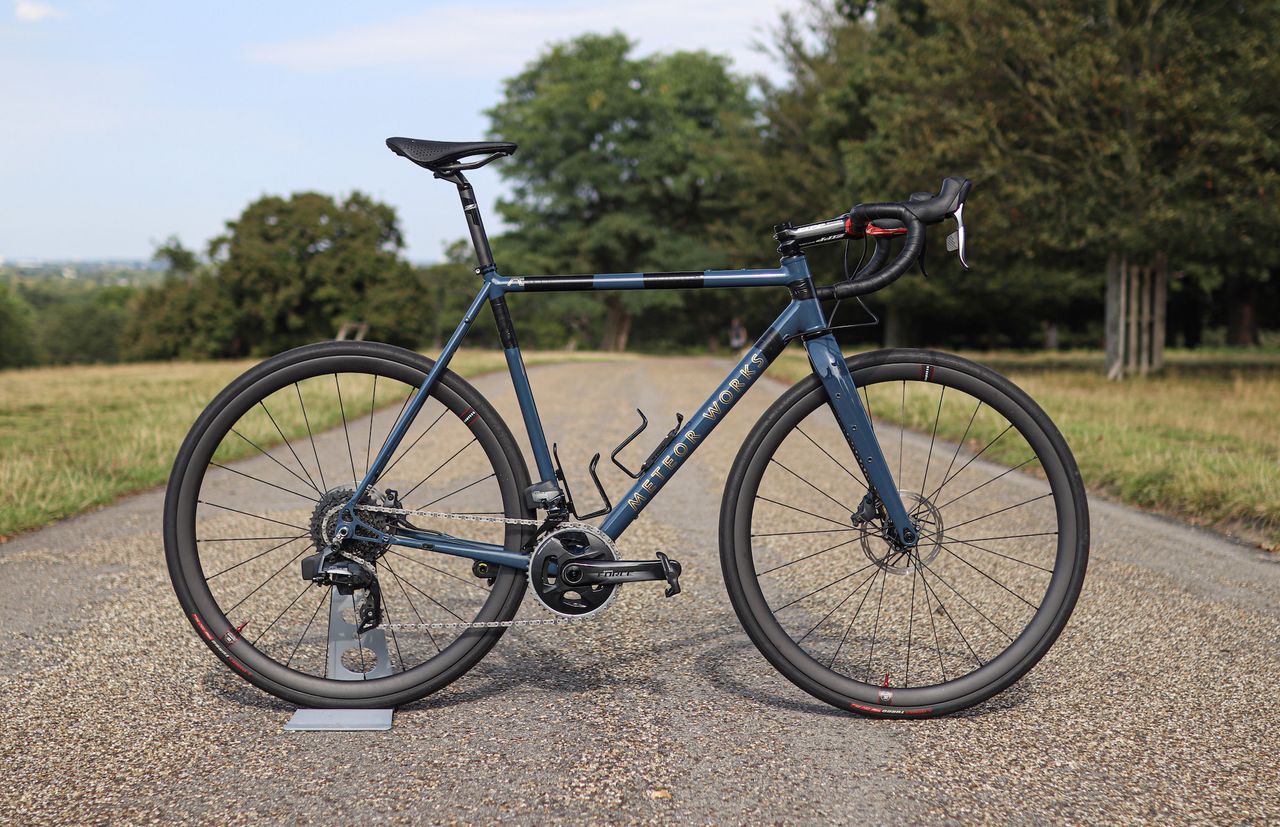
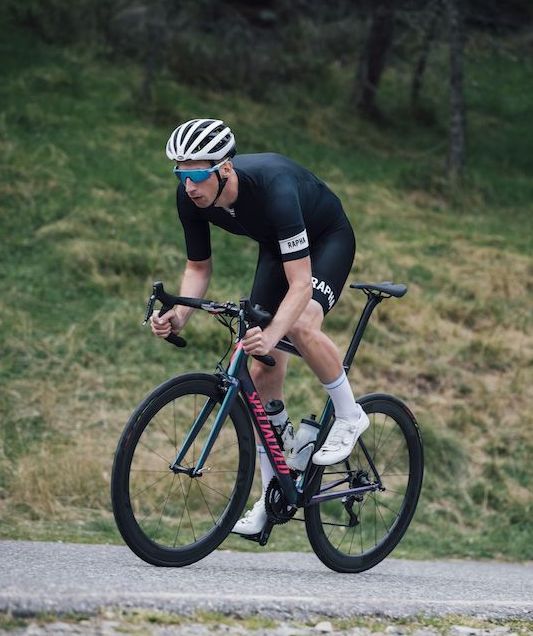
A few years ago I decided to give up on doing anything particularly fast or competitive on a bicycle anymore, much as I enjoyed paying for the privilege of finishing in the mid to low end of a local road race.
Long-distance, multi-day touring had captured my interest; an activity much better suited to sub-zone two riding, but still literally packed with challenges thanks to the sheer number of hours and days spent loaded up in the saddle.
For my initial adventures I'd used off-the-peg endurance bikes which, although they did the job, weren’t really built for strapping on bags. And so I set out to build the ultimate tourer, something that could handle the demands of bikepacking and the varied terrain that comes with it, all without feeling slow and sluggish.
The build
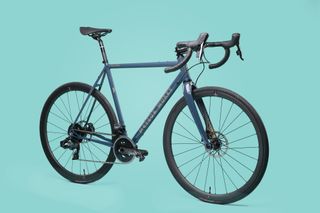
The starting point was the Meteor Works Aesir frame, designed and built by Lee Prescott of Velo Atelier in Warwickshire. The Aesir is Velo Atelier's first production frame, aiming to offer the quality construction you'd hope for from 30 years' experience in frame building, but with a much more affordable price tag (£1500) than a bespoke offering.
The frame, size 58, is double-butted steel - a blend of Reynolds, Columbus and Dedacciai - and is disc brake only with clearance for up to 45c tyres on the front and 40c tyres on the rear. The initial appeal for me was the more traditional geometry and round tubing, which makes it easy to load up your bike with bags, bottles, lights, and everything else for a long trip. In the past, sloping geometries and wider profile tubes (particularly along the top tube and on aero seatposts) has made fitting bags a real pain. The Aesir features a tapered top tube to dampen road vibrations, and its S-bend chainstays are a thoughtful touch to avoid heel-clipping on the frame, something that has been an issue for me.
On top of that the Aesir includes mounts for a bottle cage below the down tube, a bento box on the top tube, mudguards front and rear, as well as reinforced mounts for pannier racks. The frame comes with the option of a racier carbon fork or a steel adventure fork. I went with the beefy-looking steel fork which features mounts for low riders and integrated routing for a dynamo, all advantageous additions for longer voyages.
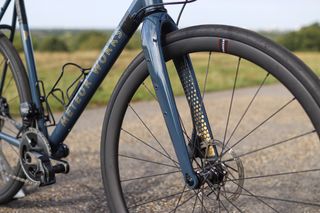
The handlebar is also from Velo Atelier, a carbon adventure bar which offers enough flair to once again make life that bit easier when fitting bags to the bike. I'm using a 42cm bar with 120mm of drop.
As for the groupset, well, my head said mechanical but my heart couldn't resist SRAM's Force eTap AXS. I've never had any issues using an electronic groupset on a tour, in fact it just gives me a kick up the arse to be more prepared for the trip ahead, though I appreciate a mechanical groupset is the more practical choice if you head truly off-piste.
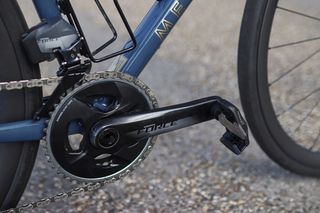
The range of gears the 12-speed Force groupset offers though has been perfect, as has the shifting. The 43/30 chainrings combined with a 10-36 give options low enough to get up anything on or off-road, while I've never suffered for lack of top end while touring. The cranks are 175mm. Being wireless it's also easy to maintain, which is definitely something I need.
This is the first time I've used one SRAM's AXS groupsets, but I've really grown to enjoy the shape and size of the Force shifters. The larger surface area just feels more comfortable over long days and paired with the adventure bars I've got a good variety of positions to avoid any discomfort.
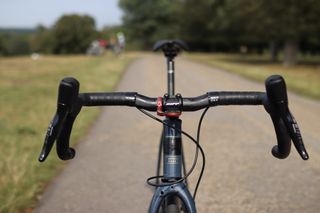
Despite riding predominantly on road, the wheels on this build are actually Reserve 32 carbon gravel wheels. They're Reserve's more race-orientated gravel wheels, but for riding on-road they feel not only bombproof, but fast-rolling as well. The 23mm internal rim width suits my wider tyre preference, and it's great to have the option to switch tyres and take the bike off-road if I want to.
My set came with DT Swiss 350 hubs, the more affordable option but which still provided a smooth performance. You can drop a bit more cash to get these with DT Swiss 180 or 240 hubs if you were planning on racing or you're after weight saving, but the 350s were more than good enough for what I needed on the tourer.
The Reserve 32s feature standard spokes and external nipples to make maintenance that bit easier, and I initially had these set up tubeless on S-Works Turbo RapidAir tyres.
The wheels are fitted with 140mm disc brake rotors, providing excellent stopping power, particularly when the bike is loaded with the extra weight of bags. There's no question mark over their performance so far, although they do get a bit noisy in the wet.
I'm using a Zipp Service Course SL seatpost, which is a mixture of aluminium and carbon for a slight bit of extra comfort. The Zipp Service Course SL stem is aluminium, and is a rather long 130mm with -6 degree drop. I've chosen that length simply to get the bike as close to the setup of my regular road bike as possible, preferring to maintain the same position even on long-distance riding.
Weight wasn't a particular consideration for me on this build for obvious reasons, but the bike snuck in at just under 8kg when I last weighed it.
Future upgrades
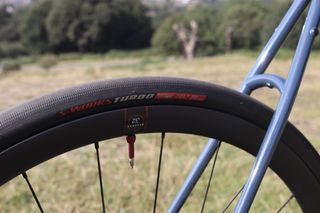
As I mentioned, this bike was built to be the dream tourer so for now there aren't a huge amount of changes I would make to the current setup.
I would change the tyres before the next tour. While the S-Works Turbo RapidAir (30mm) are great tubeless tyres and very fast, they aren't rugged enough for regular touring. I've done around 1,500km on these tyres and they don't look like they would handle another long tour (particularly in winter), so I would certainly switch to something more hard wearing like the 32c Roubaix Pro or the 32mm Bontrager R2 Hard-Case Lite tyres which I was impressed with on a previous trip.
I'll need to get some of the paint redone: unfortunately the tape I used to protect the frame from the bags has peeled away some of the paint, which is a shame because I really like the blue with gold detailing.
For bigger tours I’ll invest in some panniers or a bigger and more stable rear pack, and will finally get the dynamo set up at the front. I’ll also add some time trial bars to the front for ultra-distance solo rides simply for another riding position to reduce strain on my arms and back.
My riding
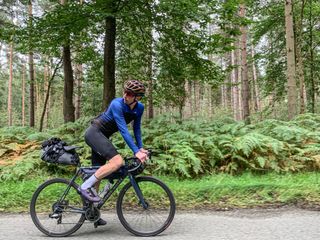
This bike was completed in early 2021 when touring was trickier due to ongoing events.
Since April I've managed to do several smaller bikepacking trips to visit family and a week-long tour to Norfolk, with my longest ride so far a 213km ride from south London to King's Lynn.
That was, as you'd expect in Norfolk, largely flat riding, but for a first trip the Meteor Works delivered on everything I'd hoped it would. It might not have the sheer speed of bikes I've used in the past, but I never felt like it was holding me back, and the added comfort, practicability, versatility are certainly more important on these trips.
I'm aiming to travel a bit further afield soon and really put the bike to the test with a tour in the Alps, as well as finally ticking off Land's End to John o' Groats.
The Aesir may also get some outings for some Surrey and Kent endurance rides in the winter when I get round to sorting some mudguards for it.
Specification
- Frame: Meteor Works Aesir by Velo Atelier
- Groupset: SRAM Force eTap AXS, 43/30 chainrings, 10-36 cassette, 175mm crank
- Brakes: SRAM Force eTap AXS HRD, Paceline Centerlock Rotors 140mm front and rear
- Wheels: Reserve 32 gravel wheels, DT 350 hubs
- Tyres: Specialized S-Works Turbo RapidAir Tubeless Ready tyre (30mm)
- Stem: Zipp Service Course SL, 130mm
- Seat post: Zipp Service Course SL, 27.2mm diameter, 20mm offset
- Handlebar: Velo Atelier Carbon Adventure Handlebar, 42cm
- Headset: Cane Creek 70 Series Hellbender
- Bar tape: Fizik Microtex 2mm, black
- Saddle: Specialized S-Works Power with Mirror
- Pedals: Look Keo Blade Carbon

Thank you for reading 20 articles this month* Join now for unlimited access
Enjoy your first month for just £1 / $1 / €1
*Read 5 free articles per month without a subscription

Join now for unlimited access
Try first month for just £1 / $1 / €1
Get The Leadout Newsletter
The latest race content, interviews, features, reviews and expert buying guides, direct to your inbox!
Follow on Twitter: @richwindy
Richard is digital editor of Cycling Weekly. Joining the team in 2013, Richard became editor of the website in 2014 and coordinates site content and strategy, leading the news team in coverage of the world's biggest races and working with the tech editor to deliver comprehensive buying guides, reviews, and the latest product news.
An occasional racer, Richard spends most of his time preparing for long-distance touring rides these days, or getting out to the Surrey Hills on the weekend on his Specialized Tarmac SL6 (with an obligatory pub stop of course).
-
 Fabio Jakobsen forced to halt cycling for 'foreseeable future' due to iliac artery flow limitations
Fabio Jakobsen forced to halt cycling for 'foreseeable future' due to iliac artery flow limitationsDutch sprinter set to undergo surgery in order to attempt to fix the issue
By Tom Thewlis Published
-
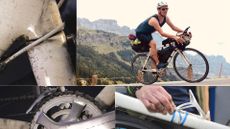 I rode 12,000 miles and didn't service my bike once - this is how much restoration set me back
I rode 12,000 miles and didn't service my bike once - this is how much restoration set me backVideographer and mile muncher Ed Westrop ‘managed to get away with it’ for 12,000 miles - but - what did the mechanic have to say?
By Ed Westrop Published
